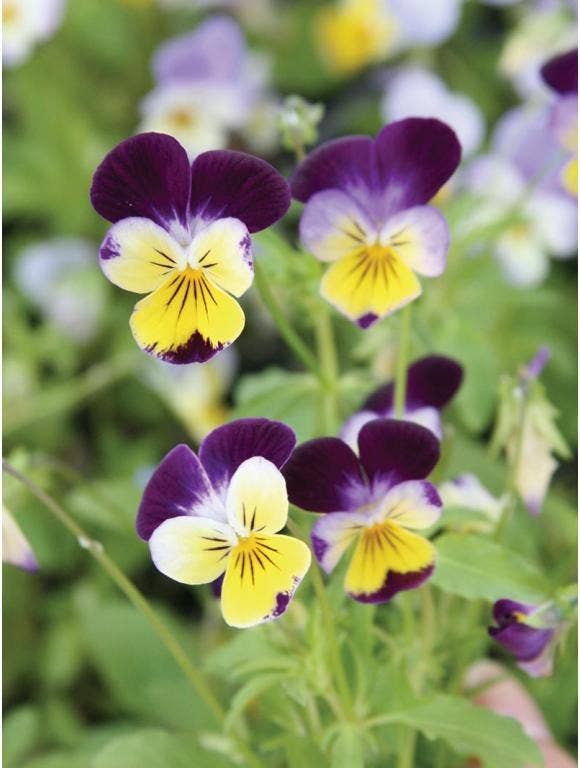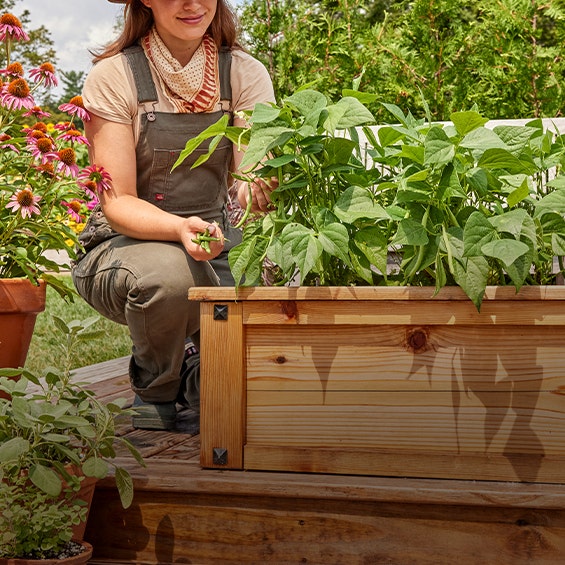


Depending on the growing region you live in, winter seed sowing allows you to start certain varieties of hardy flowers outdoors. In milder climates, directly sowing seeds is helpful if you don't have a lot of growing space inside. Some flowers actually thrive when sown outdoors, such as cold-hardy ones and those that require colder temperatures to germinate. However, it's essential to keep in mind that you can't sow seeds in the coldest temperatures, like anything below 10 degrees Fahrenheit. Keep reading to learn when to sow seeds for winter flowers and how to get started.
Understanding the Benefits of Winter Sowing
Sowing seeds in the winter has several upsides. Many cool season flowers need an extended cold period to create a natural stratification process. The cold conditions seeds experience when sown in winter help break dormancy and encourage germination.
Winter sowing can also provide earlier blooms than indoor seed starting. The seeds will germinate when the weather is just warm enough, allowing for a longer growing period and healthy plants that flower slightly earlier than transplants. Direct sowing also prevents suffering from too little light, a common problem with seeds sown indoors. Starting seeds indoors also requires a period of hardening off plants before transplanting them outdoors. Direct sowing avoids having to go through this process.
Choosing Winter Flowers
Although many flowers prefer planting when mild weather arrives, some prefer to experience cold spells before germinating. These cold-tolerant plants are typically perennials that flower early in the season and like cool growing conditions, such as the 'Brilliant Red' (Oriental) poppies. Once planted in the ground, the seeds are subject to alternating mild and cold spells, plus frequent rain or snow. Without these natural rhythms of winter, the seeds are reluctant to germinate.
Seeds from hardy annual varieties, like viola and pansy, can also be sown in winter to get a good start early in spring. When you're selecting flowers for winter sowing, look for seeds labeled with terms like "cold tolerant," "cold hardy," "cool season," "sow in autumn" or "sow in early spring" for successful planting.
Deciding When to Sow Seeds for Winter Flowers
Deciding when to sow seeds depends on the seeds themselves and your own garden growing zone. For example, in milder winter regions, like zones 6 and 7, winter hardy annuals, like 'Tutti Frutti' snapdragons and 'Johnny-Jump Up' violas, can be sown by the end of September or the beginning of October for a bloom starting in February. In warmer zones, like zones 8 and 9, you'll want to wait to sow seeds as late as November and December. Colder zones require early fall sowing or none at all, as there's a strong chance they won't survive. Check your own growing zone against these general winter sow parameters:
Zones 1-2: Not suitable
Zones 3-4: Early August or not at all
Zone 5: August or September
Zones 6-7: September or October
Zone 8: October or November
Zones 9-11: December
Growing Winter Flowers From Seeds
You can sow seeds in winter in two ways: directly sowing the seeds in the ground, or sowing them in a covered container or cold frame. Using a container protects the seeds from elements and animals, and it prevents excess moisture, which may dislodge seeds. However, seeds sown directly won't require transplanting, which may be stressful for the seedlings.
If planting in a container, make sure it's clean, has proper drainage and won't crack over the winter. Fill the container with a damp potting mix and sow your seeds. Like indoor seed starting, a clear plastic cover over the soil can retain warmth and moisture and help seeds germinate. Once the seedlings sprout, you can remove the cover. When the seedlings are large enough to handle, they can be placed into your flower border to continue growing.
You can also use a milk jug or clear plastic food container to protect seeds and create a similar greenhouse effect. Punch a few holes in the bottom for drainage and one or two on the top for ventilation on sunny spring days. Cut into the container three-quarters of the way around the middle so the lid can open to allow for ventilation and close when the seeds need protection. Fill the lower part of the container with damp potting mix and sow your seeds. Place the container outside, but not too close to buildings that may radiate excess heat.
With the right seeds and growing conditions, winter-sown flowers provide an early jump on your garden, giving you a longer blooming period to enjoy.
To learn more about sowing seeds successfully, check out Burpee's guides to direct sowing.



